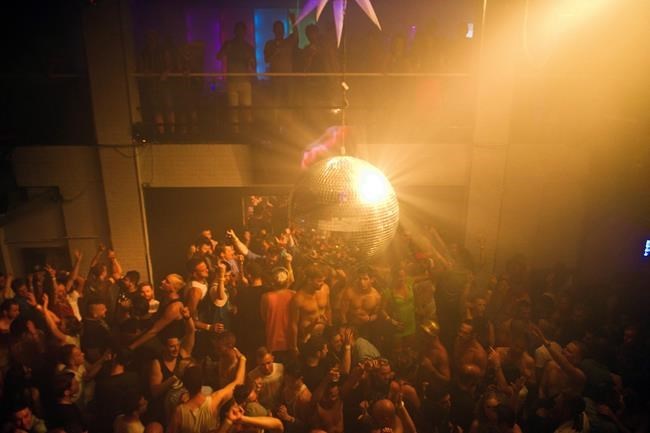Paisley Nahanee is longing for those exhilarating club nights, the ones where bumping into a few old friends on the dance floor wasn't considered a health risk.
But when the disc jockey and event organizer throws a couple parties at Vancouver's pride festivities this weekend, nobody will be making close encounters beneath the disco light, under orders from British Columbia health officials.
"This is going be really different," Nahanee said of two physically distanced Level Up! events that are restricted to outdoor seating of 50 people at the Clubhouse bar.
The parties are billed as "not quite like last year, but with the same spirit," and without an overflowing dance floor it'll certainly feel scaled down.
Instead of crowds numbering in the hundreds, guests can reserve tickets for up to six of their friends on the patio. Together, they'll congregate in their circle — or "pod" — for a two-hour window before making way for the next round of partiers. It's regimented, but for Nahanee, at least it's happening.
"Partygoers just have to change their expectations," she said.
"You're not going to meet any new friends."
A province-wide ban on dance floors went into effect last week after a number of COVID-19 cases linked to bars and clubs raised concerns over close contact. The move dealt another blow to the crippled local club industry that's struggled to reopen in the midst of the pandemic.
Club operators in B.C. aren't alone either. Any bar or venue with a dance floor as a draw might be forced to rethink how they operate with no end to COVID-19 in sight. In Toronto, large venues remain closed, while in Montreal nightclubs are back in business without dance floors and with limited capacity.
Morgan Deane, a New York-based expert in the clubbing industry, has called for a widespread reckoning with the future of nightlife.
"Everyone's still operating in this modality of when COVID is over, everything will go back to normal," she said.
"Things are not going back to normal."
Deane, who's spent more than 15 years helping launch new venues and run electronic music festivals, wants to see club owners stop seeking temporary fixes and instead look at "completely reimagining" their business.
Her online guide "A Light in the Night" serves as a roadmap for small clubs hoping to reopen during the pandemic. It compiles illustrations of suggested venue layouts alongside best practices made in consultation with industry professionals and health experts.
The guide's encourages standard practices, such as enhanced cleaning and wearing masks, as well as mandatory temperature checks for all staff.
In the VIP section, the safety model suggests alcohol be stored in a "bottle cage" that's only accessible by the service staff to minimize contact. The new practice would add a barrier to the typical VIP experience where clubgoers shell out big bucks to pour from expensive bottles of liquor at will.
On the dance floor, various distancing measures could separate partiers, including circles on the floor that isolate dancers from each other and a double rope that keeps two metres separation from the seated area to prevent overspill.
"It's really reimagining what a dance floor is," Deane said.
"Not saying we can't dance anymore or that there can only be lounges, but what can we do instead?"
Dr. Isaac Bogoch, an infectious diseases expert at Toronto General Hospital and associate professor of medicine at the University of Toronto, said the guidelines outlined by Deane are well thought out, though he's still concerned about how they would fare in a real-world setting.
Many people still assume that masks are a fail-proof barrier, and Bogoch worries that could play out in the clubs.
"Masks might provide a little bit of benefit but not as much as people think," he said.
"They forget that physical distancing is really driving it."
He said it's time for a "tremendous PR campaign" that encourages people to understand the roles of masks and physical distancing in indoor spaces.
"I don't think there's any easy answer here," he said. "A lot of things are very easy to say, but just hard to do."
Reza Afshari, a clinical professor at the University of British Columbia, expects the coming months will be unpredictable for nightlife as more people head indoors in the cooler weather. While that presents new hurdles that could lead to rollbacks in reopenings, he believes a collaborative relationship between the provincial government, scientists and club owners themselves could help endure the challenges ahead.
"Putting regulation in place is like a faucet that you're opening more. If you see there are some side effects, then the speed of the running water should become slower," he said.
"There is no rule that's being written on a stone."
This report by The Canadian Press was first published July 27, 2020.
Follow @dfriend on Twitter.
David Friend, The Canadian Press




